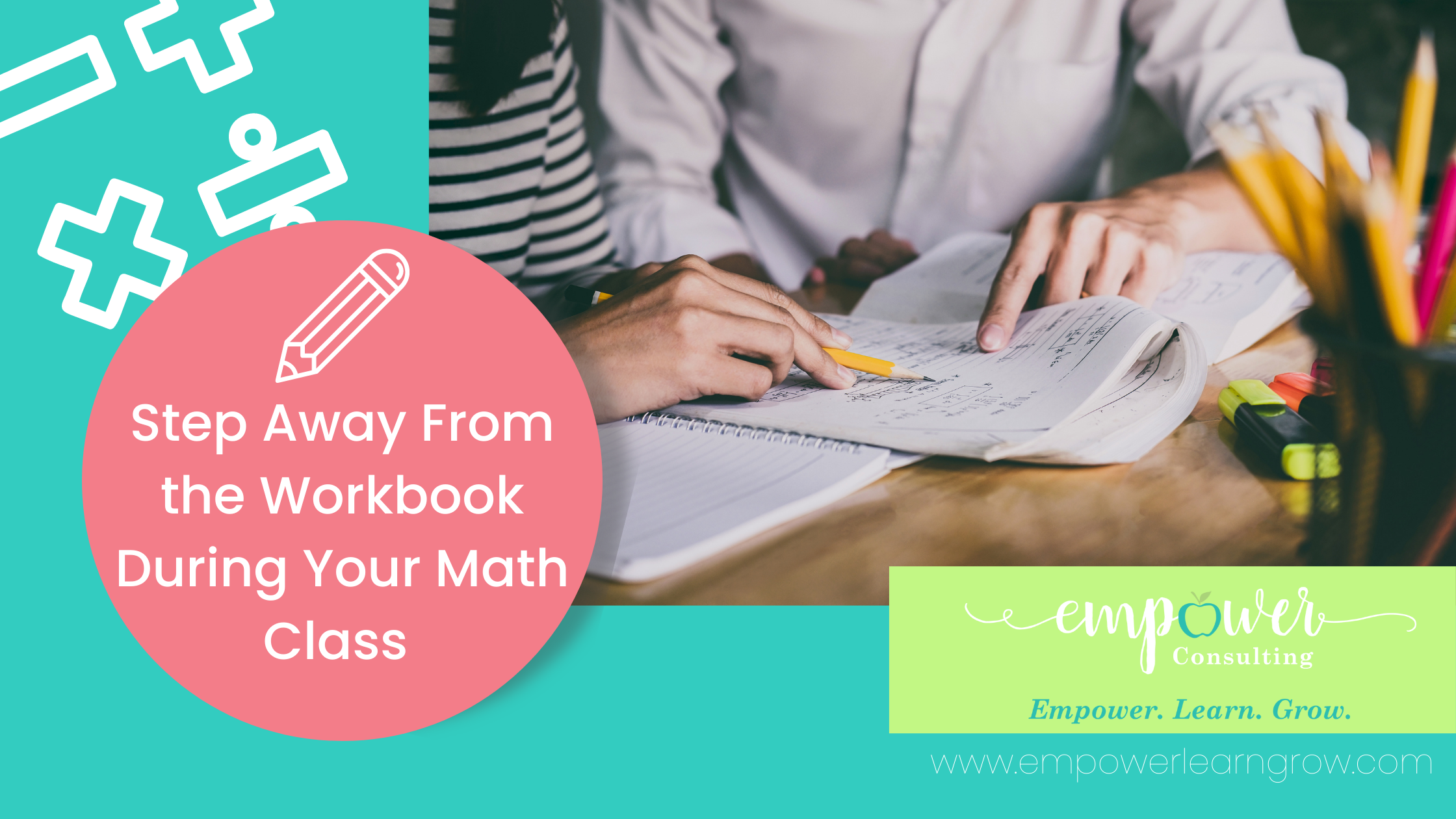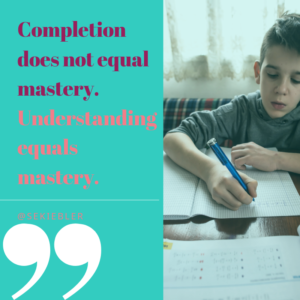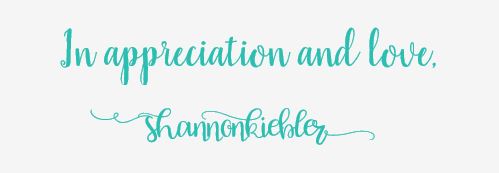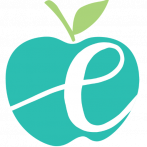
30 Aug Step Away From the Workbook During Your Math Class
If your math class consists of your students grabbing a workbook as soon as they walk in and then proceeding to just go over math problems one by one, without a glance at your teacher’s edition, I am asking you to step away from the workbook, rethink it all, and use another method.
I understand we were taught this way in elementary school and taught to teach this way as teachers so we do what we know.
You’re not alone.
The majority of the teachers I meet from across the nation teach their math classes in this same format, but it doesn’t have to be this way.
I am going to push your thinking a bit and ask you to step away from the workbook.
Of course, I am not asking you to go rogue during your math instruction and I understand this is a complicated thing to suggest. But you can take a step back and think about what you are doing in your math class. If you are not using the workbook that is part of your curriculum, are you using worksheets from Teachers Pay Teachers or Pinterest?
You are taking those same math problems from the workbook and just having your students complete them on a paper with a cute frame and clip art. Any form of paper in which you are teaching mathematics problem by problem, should be reconsidered.
Notice I am not asking you to stop using the workbook completely. I use workbooks and expect you to use them as well. What I am asking is for you to reconsider how you use them to gain proficiency in math skills and expect engagement from students.
I think a student who Jo Boaler interviewed said it best when asked about their opinion of math class. The student shared that, “It’s like they (teachers) treat our math books like the Bible. It’s the only thing that matters in math class.”
Is that what you want your students saying about your math class?
I bet if you read your Teacher’s Edition, you would notice that the intention is never to teach directly from the workbook.
The intention is to use the workbook to:
- Facilitate learning
- Provide visual support
- Provide a place to build procedural fluency
- Help build conceptual understanding
Reconsider those worksheets you are buying off of the internet from professional individuals who most likely do not have the background in curriculum writing. We really lose rigor when we use these materials because now, we are relying on the professional judgment of the creator of that document to know the rigor of our standards. Reasoning is rarely involved.
The reality is, these are glorified drills.
So, I am proposing that you use the content from your curriculum and the workbook to keep rigor high, but present the ideas in a much more creative way during math class. Read more about this idea here in this well-done article on the importance of having a curriculum and pay special attention to misconception #5: Writing Our Own Curriculum.
Use your math workbook in a way that increases:
- Student ownership/buy-in
- Student engagement
- Reasoning
- Math talk
- Access and equity
Try this in your class:
- Take ONE problem from the workbook page you have evaluated as a worthy task (even a computational problem)
- Project it for your class
- Have dialogue with your students, explore your students’ reasoning, try different methods to solve it, etc.
When you open the workbook and see 32 problems that need to be completed, you cannot take part in these special conversations with your students. The more problems completed, does not equate to a better math lesson. Diving deeper into one problem means more than rushing to complete a page full of problems. Completion does not equal mastery. Understanding equals mastery.
Less is more. I can have the most amazing and rich conversations with students over ONE problem and deeper understanding than I had with 32 problems that are now filled in. Let’s be honest, they may be completed, but it doesn’t mean students know any more than they did when they started.
When we start with one problem and then choose 2-3 more from the page, we increase dialogue, effort, and buy-in. I am way more likely to engage in thinking when I’m not worried about completing. You can just post ONE double-digit addition problem and have everyone work that one problem out on their math boards. Then ask students to explain to each other, to the group, to agree or disagree, draw a visual to match, etc. This is building engagement, understanding, and buy-in. Students believe it is worthwhile to discuss, reason, defend, and draw, because they are no longer worried about having to complete 30 more problems.

How can you implement this as part of your instruction?
Example of what you probably do in your class: You have a workbook page with a thermometer and a list of questions.
- You have students discuss the thermometer or you may explain the thermometer yourself to the class.
- You ask each question on the workbook page.
- You may call on one or two students for the answers and ask the class to fill them in. You may even have them work with partners or turn and talk to answer the questions.
- The page is complete!
Do your students know how to read a thermometer or how to complete a worksheet?
Instead, try stepping away from the workbook like this:
- Post a picture of JUST the thermometer.
- Tell your students to put their workbooks away!
- Ask your students to work in partners to explain what they ‘notice’ and what they ‘wonder’ about the image.
- As your students are discussing, point out those features on the thermometer, ask further questions, and label the thermometer.
After about 5-7 minutes, your class has completely figured out how to read the thermometer without once looking at the workbook page. This resulted in students who were more engaged in the lesson by thinking and justifying their reasoning.
When one of your students ‘notices’ the thermometer is counting by 2’s, you can ask everyone to prove it with their patterns. They may then find that only one side counts by twos and the other by 1’s. They can discover this and prove their thinking, on their own, without you telling them and without a workbook!
5. You can then continue to engage your students in some thinking by asking some of the questions on the workbook page (without the workbook in front of you or them). You can ask the questions using, “I’m really curious about….” OR you can turn it around to your students and ask them to ask you questions based on what they see on the thermometer. These questions can be written down and students can answer them in groups on their whiteboards.
Now that you have monitored your students’ group and heard their thinking, you can choose to release them to independent practice in their workbooks.
It’s time for your students to open their workbooks and work on the problems provided, but they are now ready to build procedural fluency because they just spent a good portion of the class period exploring, discovering, and discussing. They can apply the thinking they used earlier to complete 1 problem or 5. You, as the teacher, can determine what is necessary because nobody knows your students as well as you do!
Another way to step away from the workbook:
- Have your students leave their workbooks and whiteboards at their desks.
- Meet your students on the floor, carpet, or area where they are not distracted.
- Post the ONE problem that will launch your lesson.
- Discuss and engage with your students in this area.
- When it is time to work through something, your students go to their seats and use their whiteboards. You pull work from students to discuss, but you have students back on the carpet while you pull boards. Boards stay at the desks. You show student work to help build more understanding.
- Repeat until the time they go back to their desks.
- Now, it is time they work in their workbooks.
Which method is more engaging?
Notice I am still suggesting using the workbook, but only after your students have had an opportunity to cultivate an understanding of the skill and a chance to discuss their thinking and listen to the thinking of others. And even then, I am not suggesting you use every single problem the math workbook offers.
The workbook isn’t bad. It just isn’t the focus of your lesson. Your students are the focus.
If you are wanting to construct a more student-centered classroom and lessons, plan your lessons this way using your curriculum, or learn how to select these problems to orchestrate this type of learning, you’ll want to check out my Transformed Lesson Planning workshop!
Doors open soon to the 6 week Transformed Lesson Planning Workshop.
Join the waitlist here.



Laura Wellman
Posted at 03:05h, 02 SeptemberThis article was huge for me….I struggle so often with feeling the need to have the practice or complete all the problems, so I feel like I have a good picture….I am getting better about doing what you said, having more math talk and kids doing. Thanks for the reinforcement!
skiebler
Posted at 17:20h, 08 SeptemberI appreciate this honesty! You aren’t alone in our desire to complete it all. Let me know how it goes when you do less!!